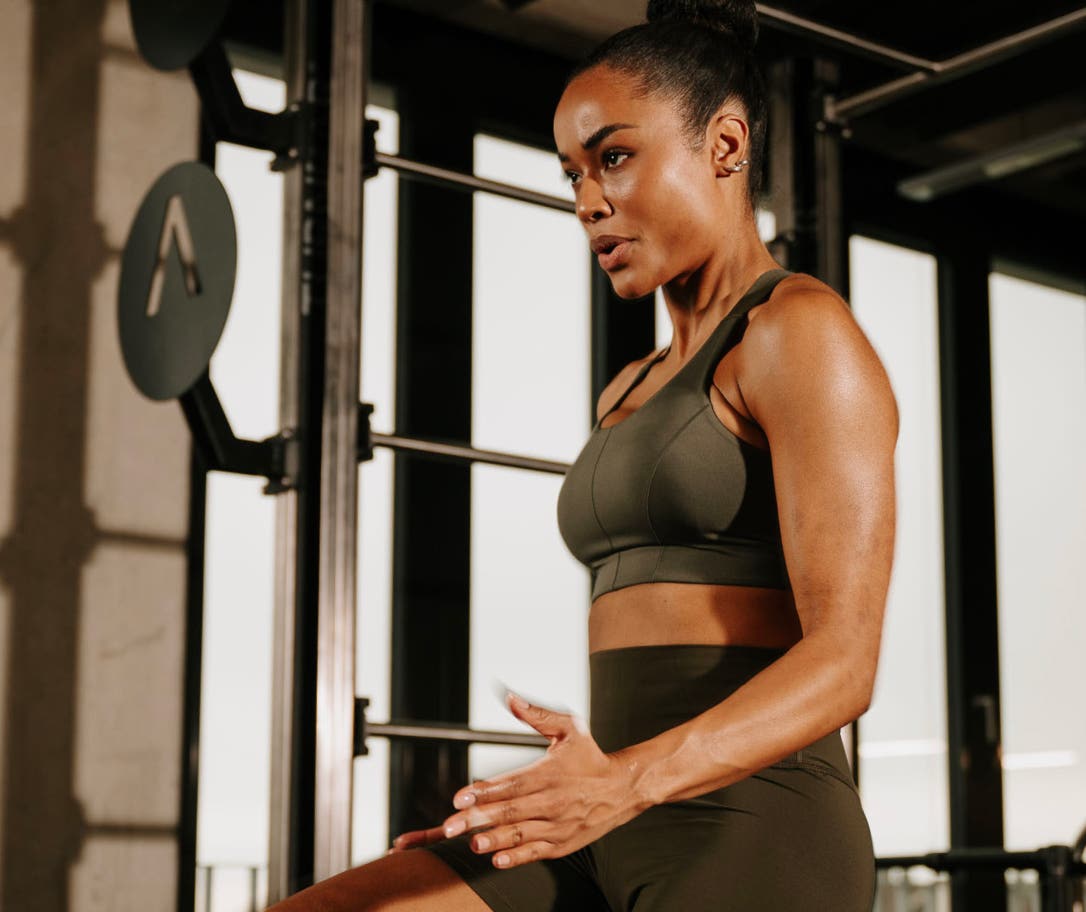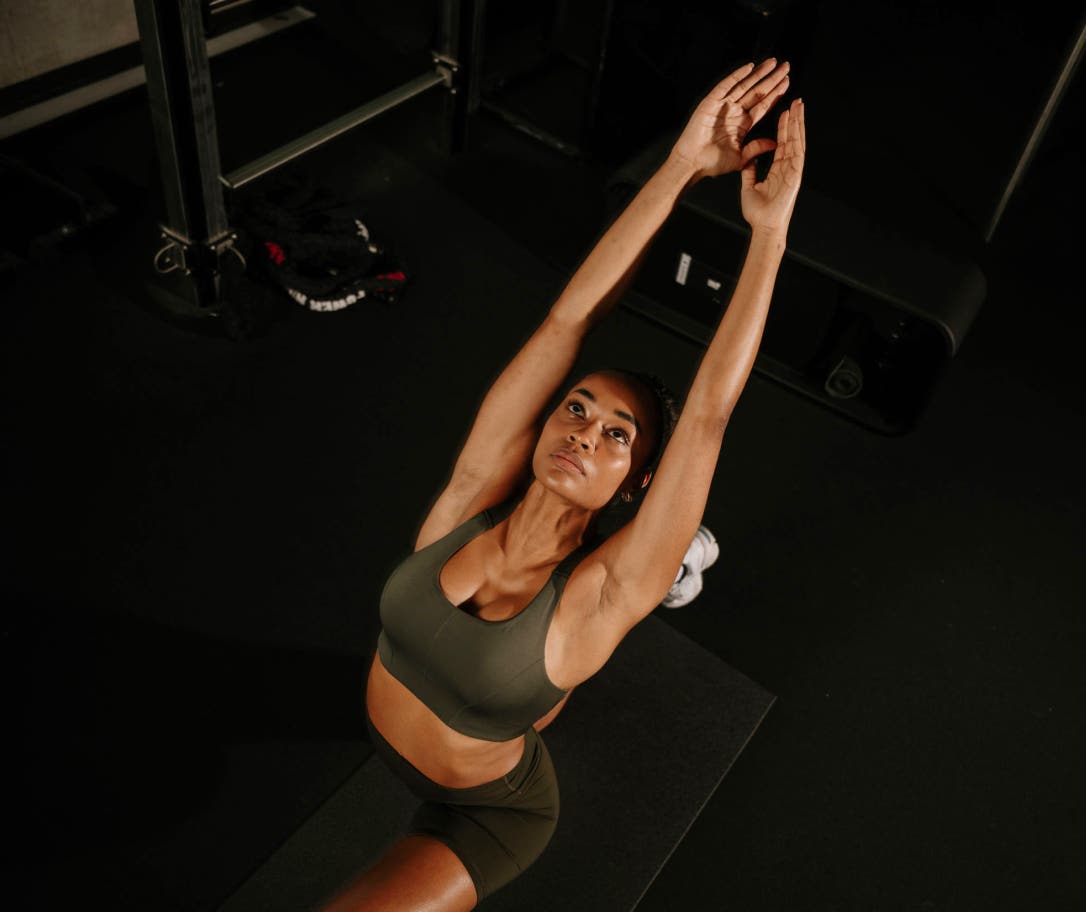Recovery is a key pillar of health and an essential aspect of any fitness routine.
It’s during recovery that the body repairs itself, adapts, and becomes stronger. Without proper recovery, all the benefits of intense training can be lost, and over time, athletes can experience burnout, injury, or stagnation.
How does the body adapt to exercise over time?
Over time, regular exercise causes various adaptive responses in the body. These adaptations make you stronger, faster, and more efficient, but they require time to manifest.1 Here are some of the key physiological changes:
- Muscle hypertrophy: When muscle fibers repair after damage, they adapt by becoming larger and stronger. This process is facilitated by recovery, particularly rest and proper nutrition, such as protein intake.
- Neurological adaptations: The nervous system becomes more efficient at coordinating movements, leading to improved strength and performance. These changes also occur during recovery as the body consolidates neural patterns learned during exercise.
- Mitochondrial density: Regular endurance exercise increases the number and efficiency of mitochondria (the “powerhouses” of the cell), improving energy production. These adaptations take place during the recovery period after exercise.
- Glycogen replenishment: Recovery allows the muscles to restore (and, after an effective training session, even expand) their glycogen stores, which are critical for sustained exercise performance. Without proper recovery, the body does not have the time or resources to complete these adaptive processes, which is why rest is as important as the exercise itself.

What happens during intense exercise?
When you engage in intense exercise, such as weightlifting, running, or any strenuous physical activity, your body undergoes a series of physiological changes across four major systems:
- Muscular system: The muscles are the primary focus during exercise. Intense training causes microtrauma to muscle fibers, and this damage is one of the essential factors for muscle growth, provided there's adequate recovery time.
- Skeletal system: Joints and bones experience stress, especially during weight-bearing activities like running or resistance training. Without recovery, overuse can lead to joint wear and injuries.
- Central nervous system (CNS): High-intensity exercise also places a significant load on the CNS. The brain and spinal cord coordinate the contraction of muscles, and excessive training without rest can lead to CNS fatigue, impairing performance and increasing the risk of injury.
- Energy systems: During intense exercise, your body uses energy from different systems (ATP-CP, glycolytic, and oxidative pathways). Recovery is essential for replenishing these energy stores, particularly glycogen, which is used as a primary fuel source during exercise.
Why can’t we train at high intensity every day?
While it might be tempting to push yourself to the max every day in the hopes of speeding up progress, the body cannot sustain this level of intensity for long.
Intense training puts a strain on various systems (muscular, skeletal, nervous), and without adequate recovery, this leads to a phenomenon known as overtraining syndrome.
Overtraining syndrome occurs when the intensity and volume of training exceed the body’s ability to recover. Symptoms include persistent fatigue, poor performance, irritability, insomnia, and a heightened risk of injury. Overtraining can also suppress the immune system, making you more susceptible to illness.1
To prevent overtraining, it’s important to incorporate periodization into a training plan. Periodization refers to strategically varying the intensity, duration, and type of exercise over time. This allows the body to recover and adapt before increasing stress again.

Active vs. passive recovery
Active recovery involves low-intensity exercise after a strenuous workout. The purpose of active recovery is to increase blood flow to muscles, which helps to remove metabolic waste products and deliver nutrients to repair muscle tissue.
Examples:
- Low-intensity cycling after a hard leg day to reduce muscle stiffness
- Yoga after an intense cardio session to improve flexibility and reduce soreness
- Walking after a long run to prevent tightness
Passive recovery, on the other hand, involves complete rest. This allows the body to repair itself without any added strain. Passive recovery is especially important for high-intensity exercise sessions or heavy lifting.
Examples:
- Sleep is the ultimate form of passive recovery and is when the body undergoes the majority of its repair processes.
- Rest days in a training program where no intense physical activity is performed.
Both types of recovery are important, but the right choice depends on the intensity and nature of the workout. A combination of both approaches, integrated into a well-rounded training plan, will maximize recovery and performance.
Tips to speed up recovery in the short-term
While nothing beats consistent rest and good sleep, several techniques can help speed up recovery in the short term:
- Ice baths: Cold water immersion can reduce muscle soreness and inflammation by constricting blood vessels and flushing out metabolic waste. Afterward, blood vessels dilate, promoting nutrient and oxygen delivery to the muscles. It’s worth noting that some people may experience more stress than others during cold exposure. It could also potentially interfere with strength training adaptations.
- Sauna: Heat exposure from saunas improves circulation and helps muscles relax. The heat can also activate the skin's sweat glands to assist in the removal of toxins from the body.
- Stretching: While the research on stretching for recovery is mixed, it can help with flexibility and reduce muscle tightness, provided it’s done gently and not aggressively.
- Hydration: Dehydration can impair recovery by reducing nutrient delivery to cells and slowing the removal of waste products. Drink water and electrolytes to maintain proper fluid balance.
- Nutrition: Consuming protein post-workout helps in muscle repair. Carbohydrates help replenish glycogen stores. Including anti-inflammatory foods (omega-3 fatty acids) can also aid recovery.

Building long-term recovery habits
To optimize performance over the long term, focus on building sustainable recovery habits:
- Sleep: Sleep is the cornerstone of recovery. Aim for 7-9 hours of sleep per night. During deep sleep, the body produces growth hormone, which plays a key role in tissue repair and muscle growth.
- Balanced training plans: A well-structured training plan that includes rest days, varied intensity, and active recovery sessions will prevent burnout and injuries, allowing you to make progress over time.
- Nutrition: A well-balanced diet rich in protein, healthy fats, and complex carbohydrates supports muscle repair and overall recovery. Focus on whole, nutrient-dense foods to supply your body with the vitamins and minerals it needs for optimal function.
- Recovery tracking: Keep track of recovery markers, such as heart rate variability (HRV), muscle soreness, and mood. This will help identify if you're overtraining or if certain recovery methods are more effective for you.
- Stress management: Chronic stress outside of exercise (work, life events) can impair recovery. Techniques like meditation, mindfulness, and relaxation can support overall well-being and recovery.
Signs of poor recovery
Over time, failing to recover properly can lead to diminished performance or injury. Be on the lookout for the following signs of poor recovery:
- Persistent soreness lasting more than 72 hours
- Decreased performance despite consistent training
- Sleep disturbances or poor-quality sleep
- Increased irritability or mood swings
- Frequent illness due to suppressed immunity
If these symptoms occur, it's a sign that your body needs more time to recover. Listen to your body, take the time, and focus on the long-term game.
Debunking recovery myths
- Stretching before a workout prevents injury: While stretching has benefits, static stretching before a workout has been shown to decrease strength and power temporarily. Instead, Dynamic Warmups (Jumping Jacks, Plank Knee to Chest) are more effective at preparing the body for exercise.
- No pain, no gain: While muscle soreness is normal, pain should not be a regular part of training. Pushing through pain can lead to injury. Listening to your body is key for long-term progress.
Let’s recap
Recovery is an integral part of any workout routine. It allows the body to repair, adapt, and improve. While there are various methods to aid recovery, such as active vs. passive recovery, nutrition, and sleep, the key lies in balance.
Proper recovery will not only enhance athletic performance but also prevent injuries and burnout. Pay attention to your body’s signals, and remember that rest is just as important as the workout itself for long-term success.
Sources
[1] Iqbal, Z., & Khedr, E. M. (2020). Physiological and biochemical mechanisms of muscle recovery after exercise: Implications for exercise performance. Journal of Sports Sciences & Medicine, 19(3), 552-561.